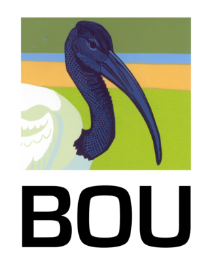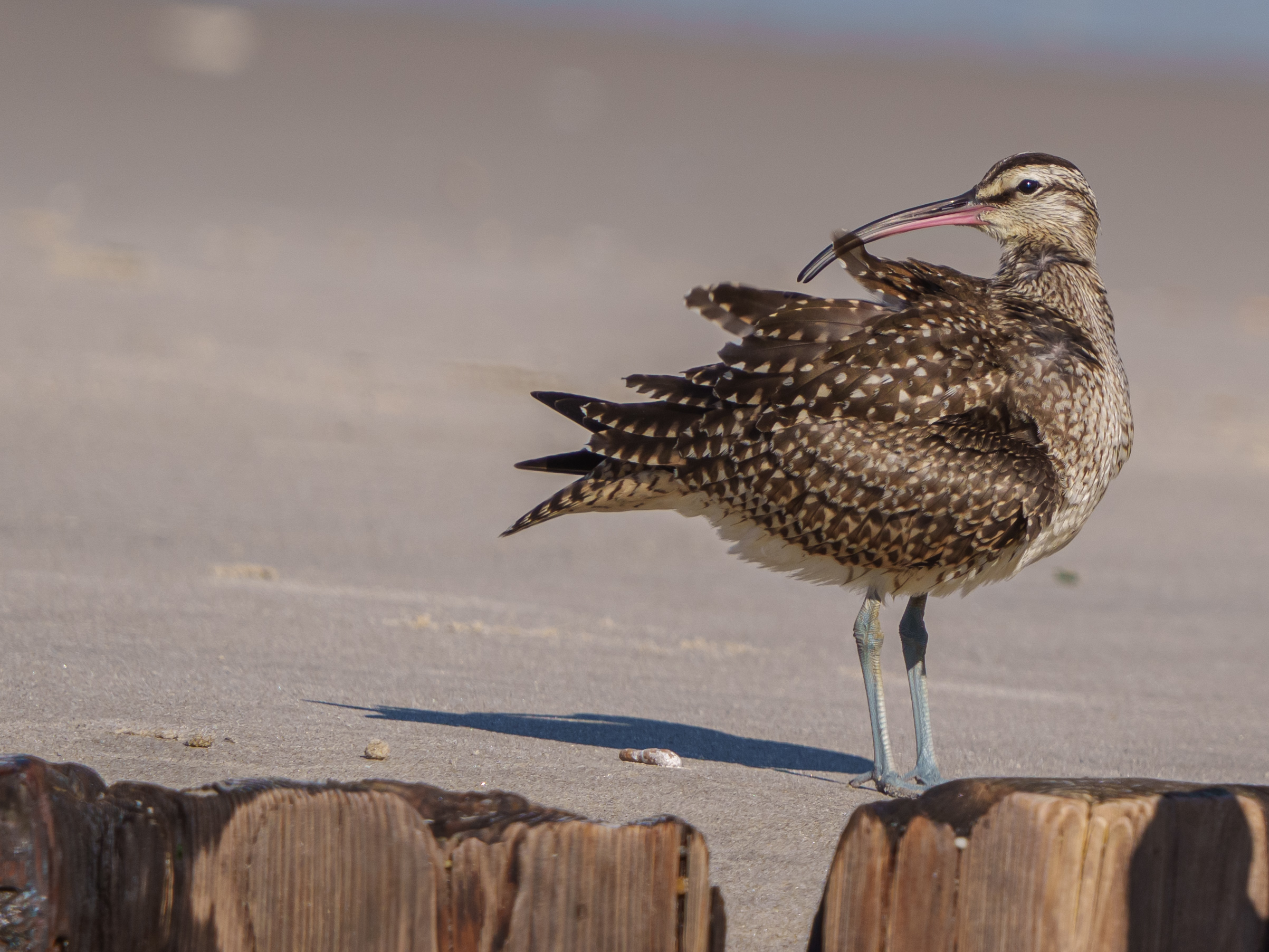
LINKED PAPER
Disparate data streams together yield novel survival estimates of Alaska-breeding Whimbrels. Ruthrauff, D. R., Harwood, C. M., Tibbitts, T. L., Patil, V. P. 2024. IBIS. DOI: 10.1111/ibi.13273. VIEW
Science is rarely straightforward, and ecological data, especially that collected in the field, can be messy, incomplete, or biased, no matter how carefully research is planned and conducted. This can potentially cause issues for the analyses the data was originally collected for, but such issues can be amplified if data is used outside its original purpose, i.e. in ‘post hoc’ analyses. However, being able to use the same data for multiple research questions has numerous benefits in terms of reducing costs, research effort, and disturbance, all of which may be particularly valuable in conservation studies.
In a recent study in Ibis, Daniel Ruthrauff and colleagues estimated the survival of Hudsonian Whimbrels (Numenius hudsonicus) breeding in Alaska, USA, using divergent data streams from different study sites and a Bayesian hierarchical framework that moderated methodological biases within sites.
Survival Estimates
It can be difficult to obtain unbiased survival estimates for many species, but some analytical techniques that can yield estimates of true rather than apparent survival include: integrating live or dead recoveries from outside the study area (e.g. Burnham, 1993); accounting for within-site movements (e.g. Schaub & Royle 2014); and using telemetry to monitor meso-scale movements (Powell et al. 2000) in mark-resight studies. However, these techniques may not be effective for species with long-distance emigrations or that are located in remote areas with limited research access, and some monitoring techniques, such as telemetry, may negatively affect individual survival (e.g. Lameris et al. 2018). Therefore telemetry-derived true survival estimates may fail to account for biases related to the monitoring technique, while mark-resight methods yield apparent survival estimates that cannot disentangle survival from permanent emigration.
Whimbrels in North America are considered to be of High Conservation Concern (Donaldson et al. 2000, USSCP 2016). Several recent estimates of annual survival of Whimbrels differ considerably, which may be due to the methods used to obtain these estimates differing in monitoring techniques, locations, types of estimate, and study period. In this study, satellite transmitters (both surgically implanted battery-powered units and externally mounted solar-powered units) were deployed at two study sites, and at one site individuals were also captured and uniquely marked, enabling mark-resight analysis. The survival of Whimbrels with implanted transmitters, externally mounted transmitters, and leg flags were estimated separately, and long-distance emigration events over the course of the study (which would have gone undetected using mark-resight techniques) were documented using telemetry. A Bayesian hierarchical framework was used to integrate the telemetry-based true survival estimates from one site (Colville River) with resighting-based apparent survival information from the other site (Kanuti River), enabling the use of disparate data types among the treatment groups and enhancing the researchers’ ability to accurately estimate survival of the study population (Saunders et al. 2019).

Figure 1. Schematic representation of datasets included in a Bayesian hierarchical framework to estimate true survival (S), apparent survival (φ), detection probability (p) and breeding-site fidelity (F) of Whimbrels from Colville River and Kanuti River, Alaska, USA. For Whimbrels from Colville River, information from solar-powered satellite tags was used to estimate true survival and also to create a pseudo-resighting encounter history that accounted for emigration events. The relationship S = φ/Fwas used to estimate breeding site fidelity of Whimbrels at Colville River. For Whimbrels from Kanuti River, resighting information yielded estimates of apparent survival for birds marked only with leg flags and those which were also equipped with surgically implanted satellite transmitters. The breeding site fidelity estimate from Colville River was applied to Whimbrels from Kanuti River in order to estimate true survival of birds from this site. See Methods for additional details. Inset image of Whimbrel with implant unit from Kanuti River, 14 June 2009.
Survival of Whimbrels in Alaska
This study provided the first survival estimates for Whimbrels breeding in Alaska, and also provided the first unambiguous assessment of breeding-site fidelity for Whimbrels (0.90).
At each site in isolation, the survival estimates included biases related to the estimation methodologies, but the methods were complementary in tandem. The use of telemetry helped to detect permanent emigration events by two of 10 Whimbrels tracked back to Alaska with satellite transmitters, which likely would not have been detected using traditional resighting-based techniques in this case. This informed estimates for birds without tracking devices. Conversely, without a control group at the telemetry-based site (Colville River) researchers were unable to verify the assumption that transmitters themselves do not bias the survival of study subjects. However, being able to include observations of live birds with nonfunctioning transmitters from the resighting-based site (Kanuti River) served this role.

Figure 2. Estimates of annual survival and fidelity (± 95% credible intervals) of Whimbrels from Colville River and Kanuti River, Alaska, USA. Values represent true annual survival S (solid circles) and apparent annual survival φ (open circles). Output derives from Bayesian hierarchical model integrating mark–resight efforts and information from satellite transmitters. All birds were marked with uniquely engraved leg flags, some birds at Kanuti River also received surgically implanted satellite transmitters (‘implant’) and some birds at Colville River received externally mounted solar-powered transmitters (‘solar’). Numbers across the bottom refer to sample sizes within each group.
The results showed that point estimates of true survival of Whimbrels from Colville River equipped with solar-powered satellite transmitters (0.83) were higher than true survival estimates of birds from Kanuti River marked with leg flags alone (0.74) or with surgically implanted satellite transmitters (0.50), but it is noted that the 95% credible intervals on these estimates overlapped across groups. It is suggested that the differences in between-site survival estimates may be related to both treatment (e.g. the negative impacts of surgically implanted transmitters on behaviour and survival) and site (e.g. habitat differences).
The researchers demonstrated how a novel analytical technique can enable two types of data collected at two sites to be used to learn more than insights from one data source or field site alone. There are many other species which, like Whimbrels, are difficult and costly to study, and for which this approach could be applied either to existing datasets or in future studies, allowing researchers to derive novel demographic estimates which could be vital for ecological studies and conservation strategies.
References
Burnham, K.P. (1993). A theory for combined analysis of ring recovery and recapture data. In Lebreton, J. & North, P. (eds) Marked Individuals in the Study of Bird Populations: 199–213. Basel: Birkhäuser Verlag. VIEW
Donaldson, G.M., Hyslop, C., Morrison, R.I.G. & Davidson, I. (2000). Canadian Shorebird Conservation Plan. Ottawa, Ontario: Environment Canada. VIEW
Lameris, T.K., Müskens, G.J.D.M., Kölzsch, A., Dokter, A.M., Van der Jeugd, H.P. & Nolet, B.A. (2018). Effects of harness-attached tracking devices on survival, migration, and reproduction in three species of migratory waterfowl. Animal Biotelemetry 6: 4–11. VIEW
Powell, L.A., Conroy, M.J., Hines, J.E., Nichols, J.D., & Krementz, D.G. (2000). Simultaneous use of mark-recapture and radiotelemetry to estimate survival, movement, and capture rates. Journal of Wildlife Management 64: 302–313. VIEW
Saunders, S.P., Farr, M.T., Wright, A.D., Bahlai, C.A., Ribeiro, J.W., Rossman, S., Sussman, A.L., Arnold, T.W. & Zipkin, E.F. (2019). Disentangling data discrepancies with integrated population models. Ecology 100: e02714. VIEW
Schaub, M. & Royle, J.A. (2014). Estimating true instead of apparent survival using spatial Cormack-jolly-Seber models. Methods in Ecology and Evolution 5: 1316–1326. VIEW
U.S. Shorebird Conservation Plan Partnership (USSCP). (2016). U.S. Shorebirds of Conservation Concern ─ 2016. https://www.shorebirdplan.org/wp-content/uploads/2016/08/ Shorebirds-Conservation-Concern-2016.pdf (accessed 10 August 2023).
Image credits
Top right: Hudsonian Whimbrel on Fort Tilden beach, Queens, New York | Remydee1 | CC BY-SA 4.0 Wikimedia Commons
Blog posts express the views of the individual author(s) and not those of the BOU.
If you want to write about your research in #theBOUblog, then please see here





